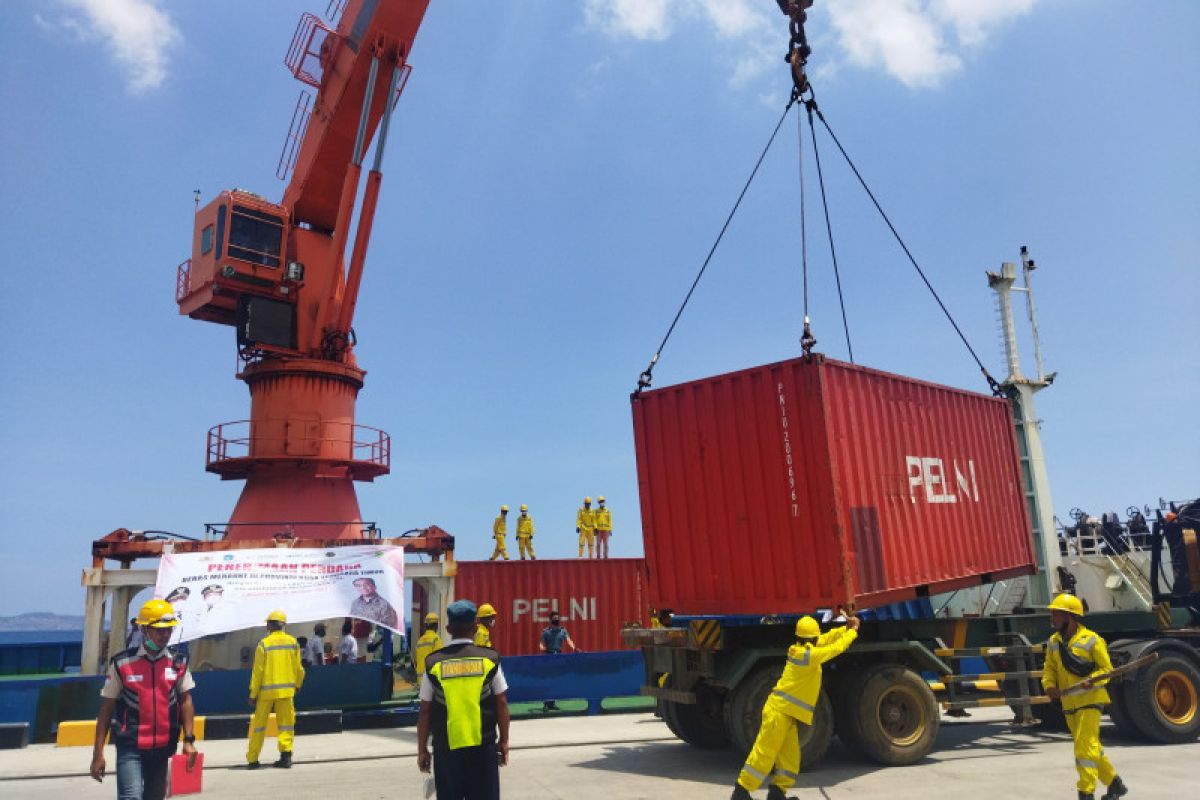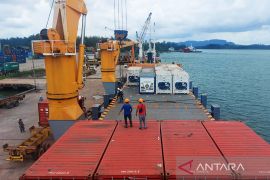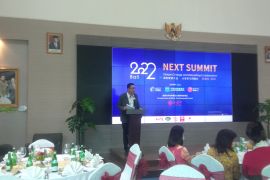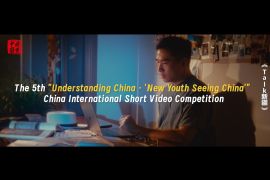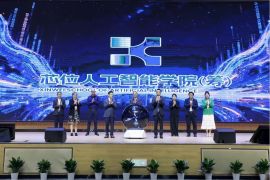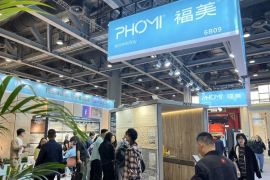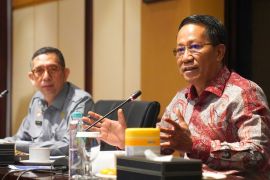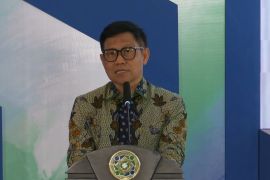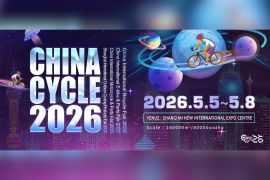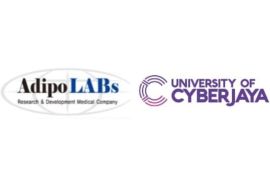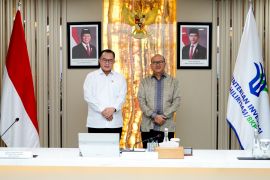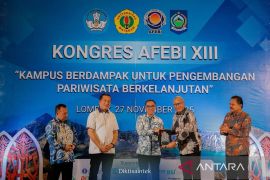“We should strive to recover and strengthen Indonesia's identity as a maritime country, not only through maritime jargons but also by making unwavering efforts in various sectors,” the president noted.
As an archipelagic country, with 17 thousand islands and over 108 thousand kilometers of coastline, Indonesia deserves to be the country with the biggest marine biodiversity in the world as well as be the world’s maritime axis, according to the head of state.
“We should boost our economic growth. We need to work hard to improve our sea connectivity,” he highlighted.
In 2015, the government had launched the Sea Toll Program aimed at supporting sea connectivity as well as ensuring the supply of food staples in the eastern parts of Indonesia-- especially in the frontier, outermost, and least developed regions (3TP) -- by operating scheduled and subsidized freighters.
The program had been targeted to narrow the wide gap in terms of the food and commodity prices between the eastern and western parts of the country.
State-owned shipping operator, PT Pelni, has been operating the sea toll routes as stipulated in Government Regulation (PP) No.70 of 2017 and Transportation Ministry Decree No. 247 of 2019.
In a bid to optimize the program, the government has also involved other state-owned companies and private shipping operators -- PT ASDP Indonesia Ferry, PT Djakarta Llyod, PT Tempuran Mas Line, PT Luas Line, and Pelayaran Pelani Tunggal Ika -- to operate the routes.
According to the Transportation Ministry, as many as 31 freights operate 31 routes and serve 105 ports as of the first half of 2021.
The freighters have served 6,617 TEUs and the largest cargo commodities are cement, rice, mineral water. Meanwhile, the return cargo reached 2,542 TEUs, with the largest commodities being wood, copra, and seaweed.
In other words, the number of cargo and voyages surged by 104 percent and 54 percent respectively as compared to those in the corresponding year.
Innovation and Collaboration
Such an achievement mirrors the collaboration among stakeholders that have worked hand-in-hand to implement the Sea Toll Program, according to Transportation Minister Budi Karya Sumadi.
Hence, the minister called on all related stakeholders to continue to collaborate in a bid to increase the sea toll program's performance in the near future as well as to innovate and make some breakthroughs.
One of the innovations that the ministry has made is SITOLAUT (sea toll information system) application aimed at enabling users to access the service anywhere and at any time.
The application is also integrated with the BRISTORE apps developed by Bank Rakyat Indonesia (BRI) for the payment service system.
Sumadi is optimistic that the integrated applications would help make the sea toll program more useful to end users since the system enables them to order, pay, and distribute goods easily.
“We strive to help meet the public needs by providing scheduled freight liners, thereby optimally securing supplies of staple and essential goods for them,” Sumadi noted.
PT Pelni President Director Insan Purwarisya Tobing acknowledged that since the company received the task of operating the sea toll routes on November 4, 2015, it has been continuing to collaborate with regional administrations and industrial players to increase their market share.
As of August 2021, the cargo load factor of nine routes had reached an average of 88.56 percent, or higher than 58 percent during the corresponding period last year.
Of the nine routes, those with the highest load factor were route T-10, at 197 percent, with a total 2,123-TEUs of cargo, and route T-13, 120 percent, with a total 1,355-TEUs of cargo.
T-10 serves the route of Tanjung Perak-Tidore-Morotai-Galela-Maba/Buli-Weda-Tanjung Perak, while T-13 serves Tanjung Perak-Makassar-Jailolo-Morotai-Tanjung Perak.
The company handled 8,164-TEUs cargo -- comprising 5,126 TEUs of departing loads and 5,126 TEUs of returning loads -- or 68 percent or 3,316 TEUs higher as compared to those during the same period of 2020.
“We are committed to serving the public, especially those in the frontier, outermost, and least developed regions (3TP),” he remarked.
The Sea Toll Program has had an impact by increasing sea connectivity and slashing price disparity, especially in the 3TP regions by up to 12-13 percent at the retailer level and 20 percent at the distributor level, according to an analysis of a shipping and port expert at the Sepuluh Nopember Institute of Technology (ITS), Saut Gurning.
Hubs, routes, ships, volumes, and return cargo also rose from time to time, he noted, adding that several Micro, Small, and Medium Enterprises (MSMEs) have been involved, as well as some hinterland networks have emerged.
“Some digital platforms have largely been offered to support the trade process as well,” he noted.
However, he pointed to some obstacles in sea toll programs, such as underperforming loading and unloading activities; shipping schedule management; lack of containers, especially reefer containers; and limited warehouse facilities.
Furthermore, Gurning believes that regional administrations should become more involved in the program, and private shipping operators should be equally treated as the state-owned companies in terms of queue, cost, and subsidy.
To this end, working groups or evaluators are required to assess each route, including its performance as well as to help solve problems.
“The government is suggested to establish a coordinating forum by involving related stakeholders in all regions connected by the 35 routes in 2022. As a result, they can collaborate, work in synergy, and monitor the process to prevent problems from emerging in each route of the sea toll,” he noted.
To this end, much needs to be done to make the sea toll program sustainable in a bid to boost sea connectivity and regain Indonesia's identity as a maritime country.
Related news: Official confirms six NTT ports in new sea toll route
Related news: BRI, Transportation Ministry integrate Sitolaut with digital banking
Related news: New normal, sea toll uses logistic communication system
Editor: Sri Haryati
Copyright © ANTARA 2021
